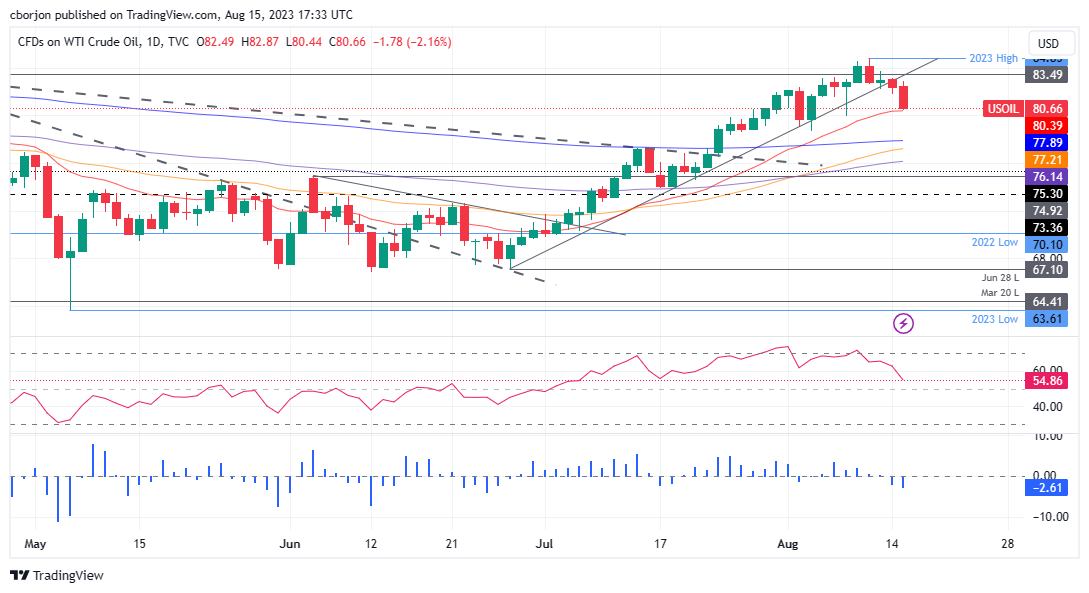WTI slumps over 2% amid China’s economic slowdown, unexpected PBoC rate cuts

- China’s central bank slashes key lending rates in response to slowing economic recovery, impacting global oil demand outlook.
- OPEC+ supply cuts by Saudi Arabia and Russia provide limited support as WTI retreats from YTD highs.
- Barclay’s revises China’s GDP forecast downwards, while WTI finds some relief in rising Chinese refinery throughput.
Western Texas Intermediate (WTI), the US crude oil benchmark, registers losses of more than 2%, as economic data from China portrays a slowing recovery, while the People’s Bank of China (PBoC) unexpectedly cut rates in key rates to stir the economy after the Covid-19 pandemic. WTI is trading at $80.49 per barrel, down 2.35%.
China’s disappointing Retail Sales and Industrial Production data weigh on crude; PBoC’s rate adjustments add to concerns
The latest round of economic data from China, with Retail Sales coming below estimates and Industrial Production disappointing market participants, spurred a reaction by the PBoC. China’s central bank cut its 7-day lending rates by ten basis points to 2.80% and applied the same measures to the overnight Standing Facility (SLF) rate from 2.75% to 2.65%.
That, alongside the supply cuts implemented by Saudi Arabia and Russia, which are part of the Organization of Petroleum Exporting Countries and its allies (OPEC+), have helped to lend a lifeline to oil’s rally, with prices reversing from year-to-date (YTD) highs.
The investment community’s concern about China’s meeting its 5% growth target in the year would likely pressure WTI’s prices. On Tuesday, Barclay’s cut China’s GDP forecast to 4.5%, citing the ongoing deterioration in the housing market.
Conversely, WTI’s fall was cushioned by the technical support level, and China’s refinery thought, climbing 17.4% in July from a year earlier. WTI traders’ focus shifts to US crude inventories.
WTI Price Analysis: Technical outlook
WTI reversed its course and dipped towards the 20-day Exponential Moving Average (EMA( at $80.47 per barrel, seen as first support, which, if broken, can pave the way for WTI to edge below $80.00. A breach of the latter will expose the August 3 daily low of $78.74, followed by the 200-day EMA at $77.89. Conversely, if WTI holds its ground above $80.00, that would be positive for buyers, which could re-test the year-to-date (YTD) high of $84.85, but firstly they need to break above the April 23 daily high of $83.49.
